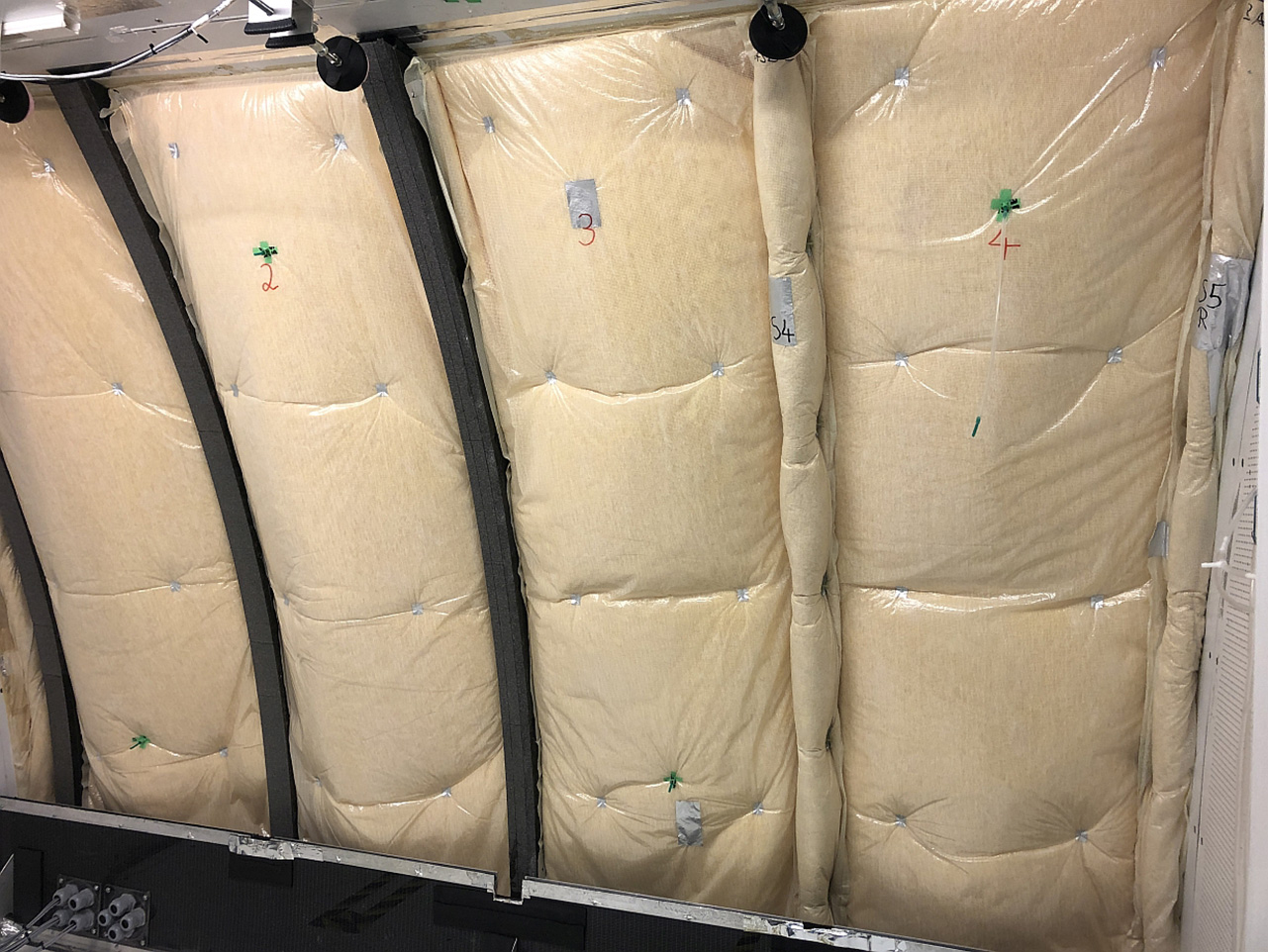A research focus of our scientists in the Vehicle Climate Control Systems group is on developing and validating climate control solutions for use in aircraft. With the Lining and Insulation Test Environment chambers in the Flight Test Facility - a flight laboratory which is unique in the world - they can test innovative building components and materials under real conditions. This was also the case in the SOPHIA project, which took a look at the use of particle foam as an insulation material. Fraunhofer IBP researchers studied the hygrothermal processes of this insulation material.
Comparison of new aircraft sidewall designs
Project goals
The new type of particle foam insulation combines the functions of thermally separating the cold fuselage from the warm cabin and fixing the insulation to the sidewall. Since it can be clamped in place, additional fastening elements are not required. One advantage is that this new insulation significantly shortens assembly times.
In the SOPHIA project, various types of particle foam insulation were compared with conventional glass fiber insulation in order to assess the difference in condensate amount and temperature distribution. The tests were performed in the LITE test chamber (Lining and Insulation Test Environment) at Fraunhofer IBP’s branch in Holzkirchen.
Current project status
The difference in temperature between the cold air on the inner surface of the fuselage behind the insulation and the warm cabin air in front of it always creates a pressure difference induced by buoyancy. This effect forces the warmer air through leaks in the insulation system towards the cold fuselage. Here, the moisture contained in the air condenses on the cold surfaces and increases the risk of uncontrolled dripping (“rain in the plane”) during the thawing process. The comparison showed that careful installation of the particle foam insulation provided the same level of moisture protection as the current glass fiber insulation. In addition, the amount of condensate does not depend on the amount of air flowing directly behind the sidewall, but on how well the insulation is installed.
More detailed information on the comparison between the two types of insulation can also be found in the detailed report on the results, which will soon become available.
Project partners
- Diehl
- Neue Materialien Bayreuth
